Haklimjae [Korea Quality] / 학림재 [한국관광 품질인증/Korea Quality]
0m 3 2021-03-29
75-3, Taesan-gil, Sejong-si
This hanok (traditional Korean house) accommodation is located in Taesan-ri, Janggun-myeon, Sejong Special Self-governing City. Its doors open to an expansive and handsome grass courtyard, with stone fences, a pond, a pavilion, stone figures, pine trees, and a furnace with a cast-iron pot.
The entire house with a courtyard is rented out in whole, with three rooms, a kitchen, a living room, and two bathrooms. There are a beam projector and a karaoke machine in the house, which makes it popular for family gatherings, corporate training sessions, or club meetings. The house has also been used for traditional marriage ceremonies and outdoor exhibitions. An outdoor barbecue area allows the guests to do some outdoor grilling, but guests can also opt to use the furnace and the traditional cast-iron pot for grilling as well. Seasonal vegetables and fruits grown in the garden are offered to guests free of charge as well. The management also offers traditional sauce-making, wood carving, tea ceremony, and meditation upon reservation.
Musée folklorique de Yeongi (연기향토박물관)
5.2 Km 12681 2019-03-26
Sejong-si Yeonseo-myeon Yangdae-gil 34-4
+82-44-862-7449
Ouvert en août 1966, le musée folklorique de Yeongi expose des reliques découvertes dans les vieux sites de la ville spéciale de Sejong. Près de 1 000 reliques, incluant des statues bouddhistes, armes, pagodes, faïences, pièces en bronze, tuiles, lettres, articles et ustensiles de cuisine, outils fermiers et autres sont exposées par thème.
Manghyang Bibimguksu - Sejong Branch (망향비빔국수 세종)
6.2 Km 124 2021-03-20
4, Bareun, 7-gil, Sejong-si
+82-44-864-2042
As a representative restaurant of locals, it is a place where you can eat Korean-style noodles. The best menu at this restaurant is spicy noodles. This Korean dishes restaurant is located in Sejong-si.
Temple Hangnimsa à Sejong (학림사(세종))
6.2 Km 8853 2023-01-12
353, Waryong-ro, Sejong-si
+82-44-867-2635
Le temple Hangnimsa fut construit pour les nonnes bouddhistes. Alors que son origine reste inconnue à ce jour, il est réputé pour avoir été bâti sous le rocher Hakbawi sur le mont Seohaksan il y a plus de 600 ans. Le temple fut déterioré avec le temps mais renové en avril 1965 et renommé Anyangsa. Le nom a été modifié en 1985 par Hangnimsa après la reconstruction du hall Daeungjeon et du dortoir.
Parc naturel de Gobok (고복자연공원)
6.4 Km 24419 2021-03-11
Yeonseo-myeon, Sejong-si
+82-44-300-4216
Gobok est un large réservoir fermier couvrant une surface de 770 000m². Il fut à l'origine construit pour fournir de l’eau à usage agricole, mais le flux abondant de poissons attira de nombreux pêcheurs du pays entier. Le réservoir fut par la suite nommé parc provincial. Ce dernier, qui couvre une surface de 1 840 000m², est situé non loin d’une forêt, de la cave Yonggul et du temple Sinheungsa sur le mont Obongsan. Le village voisin est le foyer de vignes, vergers de pêches et de poires.
Le park inclut une large place et un parc extérieur de sculptures pour plus de plaisir. Le pavillon Millakjeong offre une vue panoramique sur le réservoir. Les amoureux de la nourriture seront contents de savoir que l’on trouve de nombreux restaurants autour du réservoir, spécialisés dans le hanbang-ori (viande de canard aux herbes) megi-maeuntang (ragoût épicé de poisson chat).
Le musée des pièces de théâtre folkloriques de Gongju (공주민속극박물관)
6.6 Km 8010 2020-06-10
17-15, Dolmoru 2-gil, Uidang-myeon, Gongju-si, Chungcheongnam-do
+82-41-855-4933
Le musée des pièces de théâtre folkloriques de Gongju est un musée spécial dans lequel une variété d’art folklorique coréen peuvent être découverts. Les poupées, masques et instruments musicaux utilisés, les outils liés au chamanisme et les outils d’agriculture conventionnelle, sont exposés, nichés dans une petite pinède (9 398 m²).
Les samedis et dimanches, les visiteurs peuvent participer à un programme de création de masque, ou regarder un spectacle de marionnette. Au printemps (avant et après mi-mars, calendrier lunaire), le rituel Gyeryongsan Sansinje est pratiqué près du mont Gyeryongsan. Pendant le rituel, des festivals sont également organisés. En automne (premier vendredi, samedi et dimanche du mois d’octobre chaque année), le festival asiatique du monodrame a lieu au théâtre de musée et sur une scène en plein air. Durant le festival, les visiteurs peuvent regarder des monodrames asiatiques, qu’ils soient historiques ou contemporains .
Temple Biamsa (비암사)
6.7 Km 16410 2020-04-14
137 Biamsa-gil, Jeonui-myeon, Sejong
+82-44-863-0230
Les origines du temple Biamsa sont inconnues. Son architecture rappelle cependant le style utilisé durant la période de la Dynastie Goryeo (918-1392). Le Hall Geungnakbojeon et Samcheungseoktap (pagode de trois étages) situés dans le temple ont été désignés Propriétés Culturelles de Chungcheongnam-do.
Le temple Biamsa est devenu célèbre après la découverte des Samyeongunsang, les statues situées près de la pagode. Parmi ces statues, les trois représentants Buddha ont été nommées Trésor National N°106. Les statues d’Amitabha et de Maitreya ont quant à elle été nommées respectivement Trésor National N°367 et 368.
Mok hyang jae[Korea Quality] / 목향재 [한국관광 품질인증]
7.0 Km 321 2020-12-04
33, Mannam-ro 6-gil, Sejong-si
+82-10-8666-1217
Mokhyangjae, which literally means a ’house with tree fragrance,’ is a traditional Korean pension house which stands alone beside a boulevard surrounded by apartment complexes. Entering the garden with a low fence, you will be greeted by the antique two-story Korean style building. The building of Mokhyangjae was built in the style of a palace with red pine tree used for the crossbeam and pillars. With a feeling of magnificence and coziness at the same time, the rafter ceiling shows the wood grain and the sliding door pasted with traditional Korean paper adds to the flavor of the traditional Korean style house.
The rooms are composed of the traditional Ondol Room where one or two persons can stay; the Ordinary Room is equipped with a bedroom and an attic; and the Deluxe Room has a wide traditional Ondol room for guests from solo travelers to families. The bedroom and the living room also have traditional display cupboard and heavy hardwood table which had been used by the owner of the house, adding to the flavor of the traditional Korean style house. Equipped with cartoons and picture books, the attic is a favorite place of children. Scattered with stepping stones, the front yard of the house is filled with Sansuyu, magnolia, and cherry trees that blossom in spring.
Mokhyangjae is running a traditional teahouse as well. The teahouse was opened thanks to the Chinese husband who enjoys tea, and most of the teas are imported from China. You can have a taste of dozens of kinds of teas including puer tea and red tea, along with a simple tea confectionery.
Wondumak (원두막)
7.6 Km 8715 2016-09-06
154, Ansan-gil, Yeonseo-myeon, , Sejong-si
+82-41-867-5727
Wondumak is a Korean restaurant specializing in hot soups. Popular menu items include minmul saeutang (spicy fresh water shrimp soup), megi maeuntang (spicy catfish soup), and tojong dakdoritang (chicken hot pot). The restaurant also offers fantastic views of the Gobok Reservoir.
Sanjang Garden (산장가든)
8.4 Km 15007 2017-06-30
1131-7, Dosingobok-ro, Yeonseo-myeon, Sejong-si
+82-44-867-3333
Sanjang Garden is a Korean barbecue restaurant specializing in dwaeji galbi (marinated pork ribs), which is grilled over sutbul (hot charcoal). A popular side dish menu item is the dongchimi guksu (noodle with watery radish kimchi) that goes well with galbi.
![Haklimjae [Korea Quality] / 학림재 [한국관광 품질인증/Korea Quality]](http://tong.visitkorea.or.kr/cms/resource/56/2707656_image2_1.jpg)
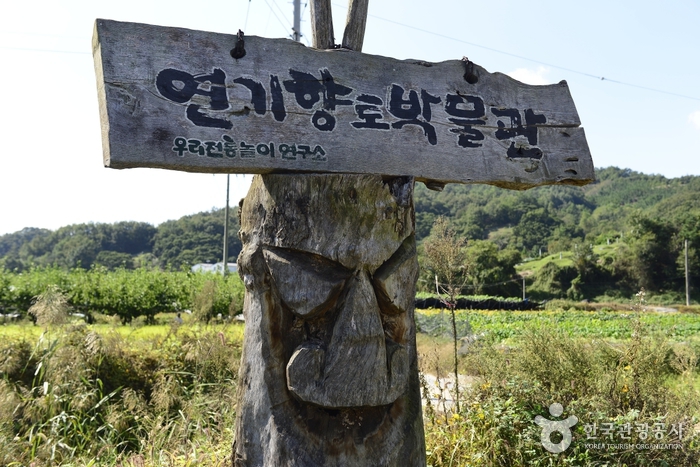
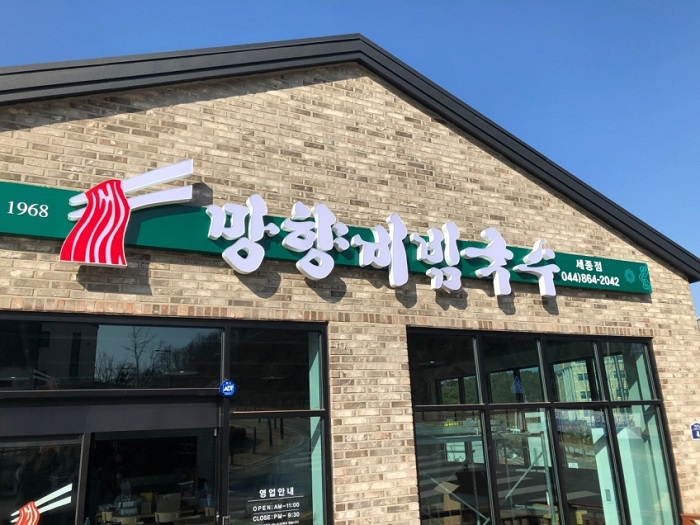

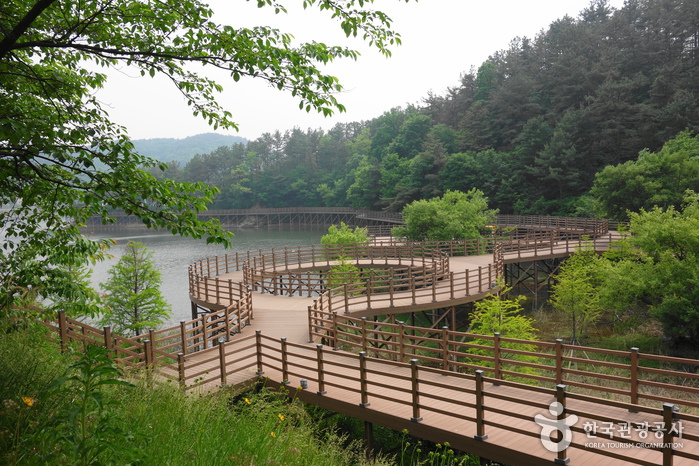
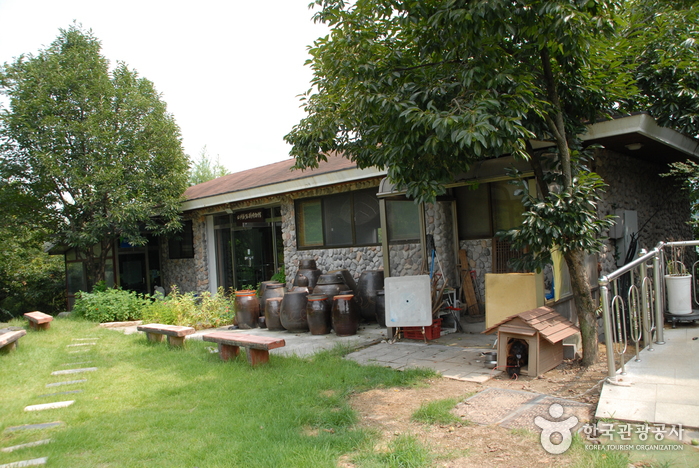
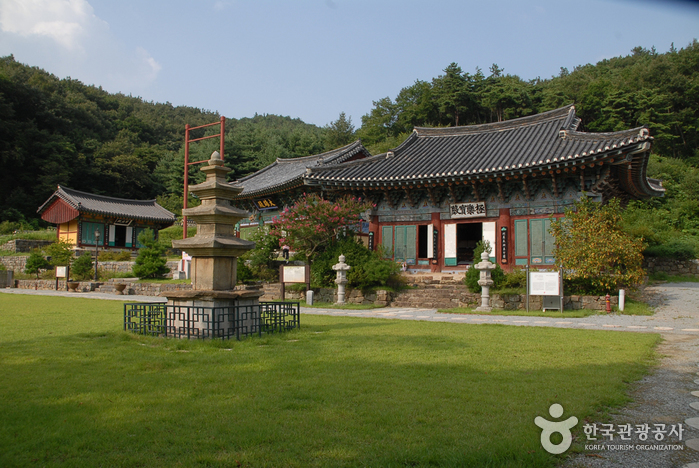
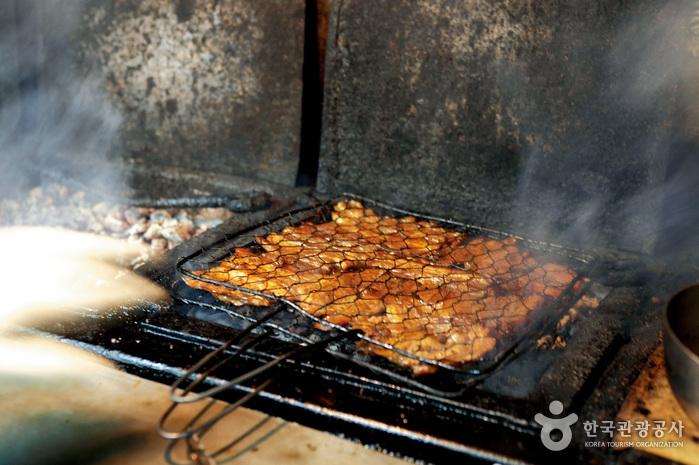
 Français
Français
 한국어
한국어 English
English 日本語
日本語 中文(简体)
中文(简体) Deutsch
Deutsch Español
Español Русский
Русский